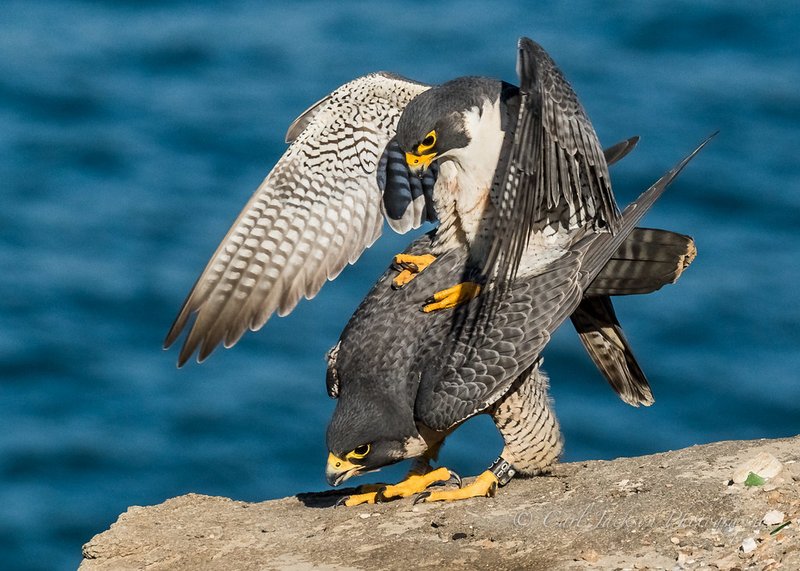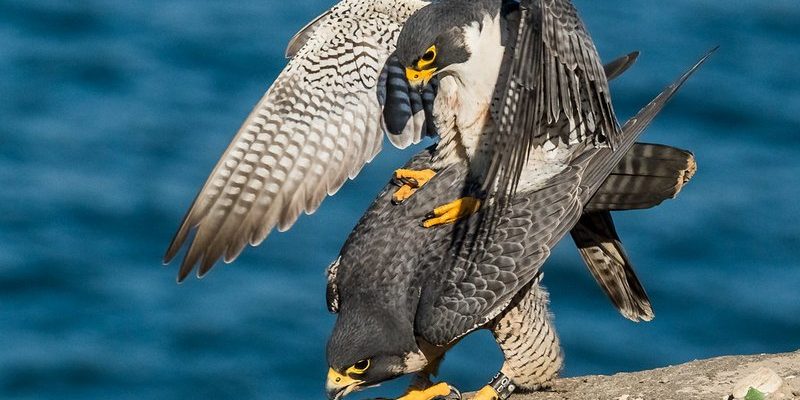
The Saker falcon, scientifically known as *Falco cherrug*, is a large falcon found primarily in the open grasslands and steppes of Europe and Asia. Their courtship rituals not only enhance their chances of finding a mate but also ensure the continuation of their species. Just like you might ask about someone’s hobbies over coffee, these birds engage in a series of aerial displays and vocalizations to assess each other’s fitness and compatibility. Let’s dive deeper into the world of Saker falcons and explore their captivating courtship and mating rituals.
What Does Courtship Look Like for Saker Falcons?
Courtship in Saker falcons begins with aerial displays. Males are known for their spectacular flight patterns, which not only showcase their strength but also their agility. During this time, you might notice them performing steep dives, loops, and rapid ascents. Imagine a high-flying ballet where the male tries to impress potential mates with his aerial skills. This display serves a dual purpose: attracting a female while also establishing dominance over rivals.
In addition to their aerial displays, vocalizations play a crucial role in courtship. Males will often emit a series of calls to announce their presence and allure females. These calls can vary from whistles to more complex sounds, creating a symphony of communication in the sky. You might picture it like a conversation where one falcon is serenading another, showcasing its unique vocal talents. The more impressive the display and the richer the vocal repertoire, the better the chances of attracting a mate.
Another important aspect of their courtship is nest selection. Once a male has successfully attracted a female, the next step involves finding a suitable nesting site. This process is vital, as the chosen location will determine the safety and success of their future offspring. Saker falcons typically prefer elevated positions, such as cliffs or tall trees, which offer a clear view of the surrounding area. It’s kind of like house hunting—only in the sky. The couple will also engage in joint inspections of potential nest sites, which reinforces their bond.
The Role of Bonding in Mating Rituals
Bonding between Saker falcons goes beyond just physical displays. After initial courtship, the pair will engage in preening rituals. This behavior not only helps to maintain their plumage but also plays a significant role in solidifying their partnership. As one falcon delicately preens the other, it creates a sense of intimacy and trust. Think of it as a way to say, “I care about you” in the world of falcons.
Saker falcons also participate in what’s called food sharing during the mating process. Males will often present prey to females as a way to demonstrate their hunting skills and ability to provide. This act is an important signal; it shows the female that the male is capable of supporting her and their future chicks. It’s like bringing a thoughtful gift to a date—showing that you’re invested in the relationship.
Once the pair has successfully bonded, they enter the next phase: mating. Copulation typically happens several times, ensuring that the female is fertilized. During this ritual, the male may perform short flights to impress the female and reaffirm their connection. It’s a delicate balance of affection and instinct, where every action has a meaning.
Nesting and Raising Offspring
After the courtship and mating rituals, the female will lay eggs, usually between 3 to 6, in a carefully selected nest. The nesting process is quite meticulous. Saker falcons often reuse old nests from other birds or create their own from sticks and feathers. The choice of nest location is crucial, as it impacts the safety of the eggs and chicks. Picture this as a couple moving into their new home, ensuring it’s in a good neighborhood.
Once the eggs are laid, both parents take turns incubating them. This shared responsibility is vital for the survival of the eggs. The incubation period typically lasts about 28-32 days, during which both the male and female will stay close to the nest, guarding it fiercely against potential threats. It’s a team effort—a beautiful blend of trust and commitment.
Once the chicks hatch, the parents continue to share responsibilities. The male usually takes on the hunting duties, while the female provides warmth and protection to the young. The chicks are altricial, meaning they are born helpless and rely on their parents for food and care. Watching this dynamic unfold is like witnessing a new family grow together, each member playing a vital role in the family unit.
The Importance of Communication in Courtship
Effective communication is key in the courtship and mating rituals of Saker falcons. Not only do they use visual displays and calls, but their body language also plays a significant role. For instance, a male may puff up his chest or spread his feathers to appear larger and more attractive to a potential mate. You can think of it as putting on your best outfit for a date—first impressions matter!
Saker falcons will also engage in mutual preening during courtship, reinforcing their bond through this intimate act. Mutual grooming helps to build trust and strengthen the pair’s connection. It’s similar to sharing secrets or inside jokes; these small acts create a deeper understanding between the mates.
When it comes time to raise their young, communication becomes even more crucial. The parents will signal to each other about hunting, territory defense, and the overall well-being of their chicks. This necessary dialogue ensures the family functions smoothly, creating a supportive environment for their offspring.
Challenges Faced During Courtship and Mating
Like many species, Saker falcons face challenges during their courtship and mating rituals. One of the biggest threats is habitat loss. As human development continues to encroach upon their natural environments, these falcons struggle to find suitable nesting sites. Imagine trying to date in a crowded cafe where there’s no space to connect; that’s what it can feel like for these birds.
Additionally, predation is a constant concern. Adult Saker falcons and their chicks can fall prey to larger birds or other predators. This reality makes it crucial for them to select safe nesting locations and stay vigilant during their courtship and breeding phases. Ensuring their safety can sometimes put a damper on their romantic plans.
Lastly, climate change is starting to impact their migratory patterns and breeding success. Changes in temperature can affect food availability and nesting conditions, posing a threat to their survival. It’s a stark reminder of how interconnected all living things are and how these challenges can affect the cycle of life.
The courtship and mating rituals of the Saker falcon provide a vivid glimpse into their complex lives. From stunning aerial displays and vocal serenades to the tender act of preening, each behavior has its purpose and significance. Understanding these rituals not only deepens our appreciation for these magnificent birds but also highlights the importance of protecting their habitats.
As you think about the Saker falcon’s journey—from finding a mate to raising young—it’s clear that nature has its own beautiful ways of ensuring survival and connection. So, the next time you see a falcon soaring through the sky, remember that it may just be on its way to wooing a mate or caring for its family. Isn’t that a lovely thought?

